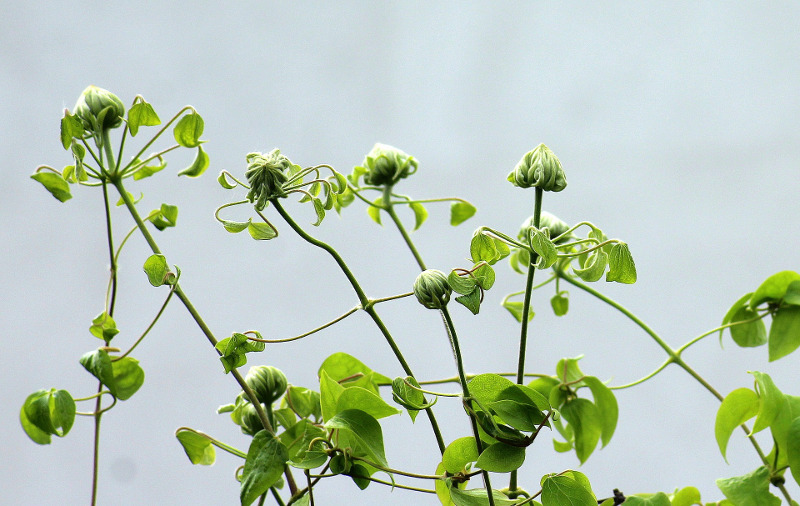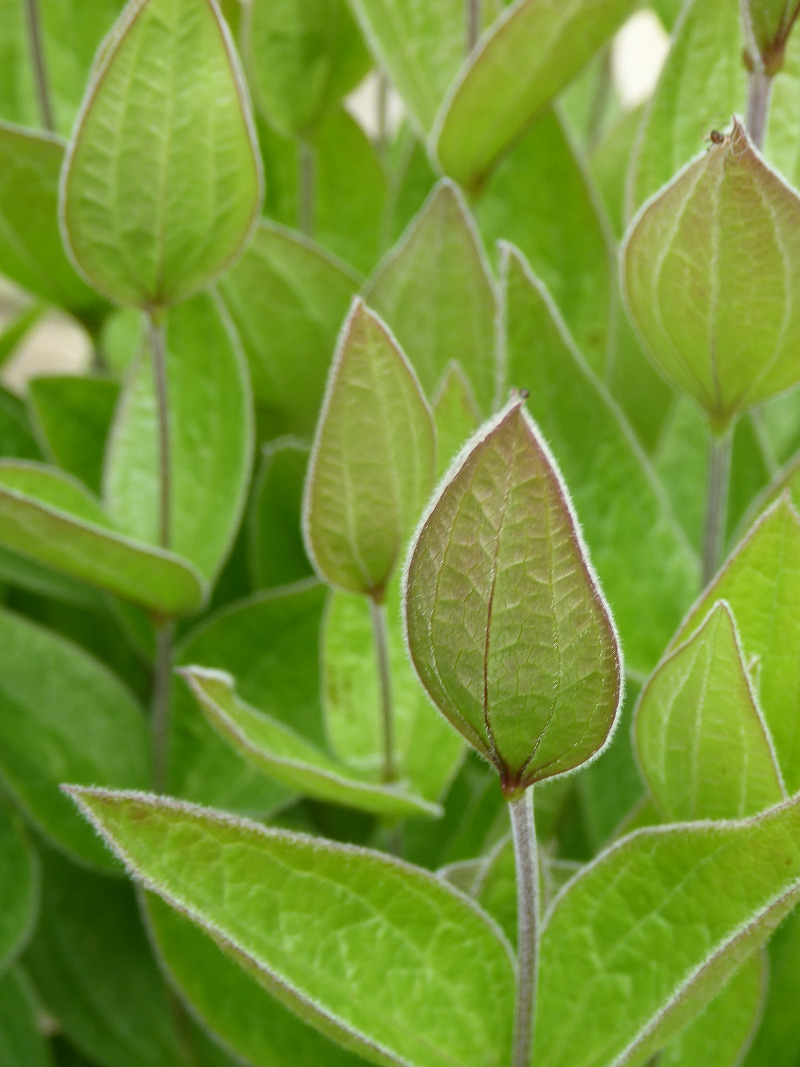Is your clematis struggling to bloom? Are there fewer flowers than expected, or worse, are there none? There are several reasons why your vine may not be putting on the show you’d hoped for. Let’s look at how you can get your clematis to bloom.

Common Reasons Why Clematis Aren’t Blooming
First, make sure your clematis is getting the right conditions to set buds and flower. Clematis need at least 4-6 hours of direct sun – have trees grown to block your plant’s sunlight? They also prefer their soil in the pH range of 5.5.-7.0. You can test your soil with at-home kits from the nursery or hardware store or mail a sample for a detailed report from your county’s agricultural extension office and amend if needed.
Pruning clematis can be a common source of confusion for gardeners. It’s understandable – the clematis family is divided into three types of pruning groups, titled Group 1, 2, and 3 – each with its own growth style and preference. If you prune at the wrong time, it’s possible to prune off or delay next year’s flowers. So, it’s key to know your variety and its group designation.
Did deer or rabbits prune your vine? There’s a good chance it will survive, and may even bloom better, depending on the pruning group it’s in.
As to fertilizer, clematis like a steady supply of nutrients. Some experts suggest starting with a lower Nitrogen fertilizer as the plant is setting buds, and then continuing with a balanced fertilizer applied lightly the rest of the season.
In the colder edges of their USDA hardiness zones which range from zones 3-9, depending on the species, an inconvenient frost can nip off the buds on your clematis. If this happens, consider relocating or protecting your clematis with wraps of burlap or frost cloth, possibly adding insulation of leaves if it’s really stretched from its hardiness zone.

Does Pruning Clematis Help Them Bloom?
It depends. For some varieties, pruning at the right time can help. If your vine is in Group 1, blooming in late-winter to mid-spring, some deadheading (removing spent flowers) may encourage a slightly longer bloom time. However, blooming only on old wood (growth) from the previous year, they don’t repeat bloom.
Clematis in Group 2 produce flowers on both new – from this season – and old wood. These vines tend to put on a big spring show with a less flashy summer encore. Pruning back about 2-6 inches to above a growing leaf all over after the spring bloom can encourage later flowers, and deadheading is useful while it’s flowering.
Group 3 clematis flower only on new wood and benefit from a strong winter pruning of 1-2 feet depending on the overall size of your plant to encourage one strong repeating bloom from late spring through fall. During the flowering season, deadheading will boost future blossoms to keep coming.
Does Fertilizing Clematis Help Them Bloom?
Clematis are what the trade calls “heavy feeders” – they like a regular dose of fertilizer and water through the growing season – but not too much. It’s wise to avoid fertilizers with a higher nitrogen count than phosphorus or potassium, which will foster foliage instead of flowers.
They are also sensitive to over-fertilizing, so always keep to or under the recommended dosage. Organic compost is something that helps the soil and nutrient uptake of the plant and can’t be overdone.
How Do I Get Clematis to Produce More Blooms?
To power-up your clematis’ flower production, check that you’ve got your vine in the right growing conditions, with sufficient sun, water and nutrients from soil and balanced fertilizer to bloom.
Find out which pruning group your vine falls under, and ensure you are pruning at the right time.
Why Isn’t My Clematis Blooming?
- It’s in too much shade
- It didn’t get enough water, and/or nutrients from soil and fertilizer
- It was pruned by humans, deer, or rabbits at the wrong time for its pruning group.
- It wasn’t pruned at the right time for its pruning group – some benefit from pruning to promote growth and flowers.
 |
Author Erica Browne Grivas - Published 12-14-2021 |
